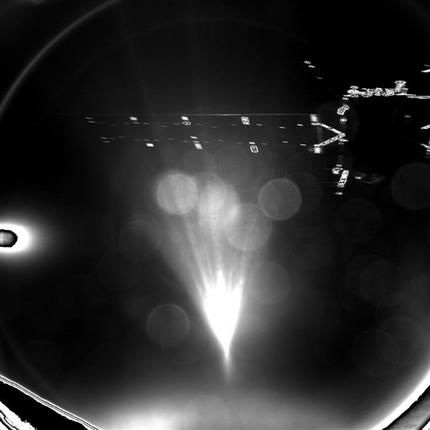The picture released by the European Space Agency ESA on Wednesday, Nov. 12, 2014 was taken by Rosetta's lander Philae shortly after its separation from the mother spaceship with the lander’s CIVA-P imaging system and captures one of Rosetta's 14 metre-long solar wings. On Wednesday, Nov. 12, 2014 the Philae lander detached from Rosetta and started it's descent to the 4-kilometer-wide (2.5-mile-wide) 67P/Churyumov-Gerasimenko comet.
While further checks are needed to ascertain the state of the lander, the fact that it is resting on the surface of the speeding comet is already a huge success. It marks the highlight of the decade-long Rosetta mission to study comets and learn more about the origins of these celestial bodies.
The head of the European Space Agency underlined Europe's pride in having achieved a unique first ahead of its U.S. counterpart NASA. "We are the first to have done that, and that will stay forever," said ESA director-general Jean-Jacques Dordain. The landing caps a 6.4 billion-kilometer (4 billion-mile) journey begun a decade ago.
Rosetta, which was launched in 2004, had to slingshot three times around Earth and once around Mars before it could work up enough speed to chase down the comet, which it reached in August. Rosetta and the comet have been traveling in tandem ever since at 41,000 mph (66,000 kph).
The mission will also give researchers the opportunity to test the theory that comets brought organic matter and water to Earth billions of years ago, said Klim Churyumov, one of the two astronomers who discovered the comet in 1969.
http://www.sott.net/article/288851-European-spacecraft-lands-on-comet

 RSS Feed
RSS Feed